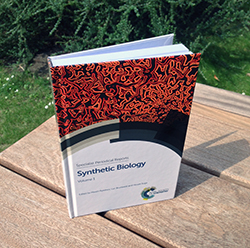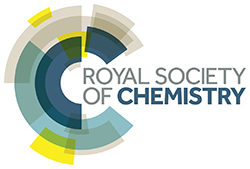New book out - Synthetic Biology vol.1
A new book on Synthetic Biology arrived at the office this week. The book is the first of a series called Specialist Periodic Reports published by the Royal Society of Chemistry.

Specialist Periodic Reports: Synthetic Biology. Volume 1, edited by Maxim Raydnov, Luc Brunsveld and Hiroaki Suga
Professor Birger Lindberg Møller, director of Center for Synthetic Biology, authored chapter 24 entitled "Disruptive innovation: channeling photosynthetic electron flow into light-driven synthesis of high-value products"
Read the abstract here and get the full text in the book
Abstract
In living cells, the formation of enzyme complexes plays a key role in controlling the channeling of metabolic fluxes towards specific targets. We aim to use synthetic biology to construct enzyme complexes mimicking those in nature but with new catalytic properties. This review offers an account of some of the current synthetic biology approaches undertaken based on the “share-your-parts” principle to engineer chloroplasts into light-driven effective production units for high value bio-active natural products such as pharmaceutically important structurally complex diterpenoids. The synthesis of most bio-active natural products involves biosynthetic steps catalysed by cytochrome P450 enzymes. Re-routing of such biosynthetic pathways into the chloroplast is possible as demonstrated with the pathway for the cyanogenic glucoside dhurrin. This constitutes an ideal proof-of-concept model system because all the genes and enzymes involved are well characterized. Photosystem I is the key and unique bio-brick used in these synthetic biology efforts with ferredoxin constituting an eminent electron donor of reducing equivalents to cytochrome P450s anchored in the thylakoid membrane of the chloroplast. Approaches to further optimize and channel the use of reducing power from photosystem I into the production of bio-active natural products based on construction of a supramolecular metabolon composed of photosystem I into which the catalytic globular domains of cytochrome P450s have been incorporated are presented and discussed. The chloroplast is an ideal production unit for diterpenoids because it is the site of synthesis of the universal precursor geranylgeranyl diphosphate. The technologies available and advances made in identifying and characterizing the genes and enzymes involved in the biosynthesis of complex diterpenoids are outlined and illustrated with the “silver bullet drug” forskolin as an example. More than 50.000 terpenoids have been detected in plants, making terpenoids the richest repository for chemicals with a wide range of bioactivities. An ultimate goal of the use of synthetic biology within this research area is to design a “plug-and-play” template-based production system that on a long-term basis can contribute to production of otherwise extremely costly medicinal compounds. This review also serves to illustrate how utilization of solar energy in combination with the approaches of synthetic biology may possibly help us to provide science based solutions to some of the global challenges we are facing and be a driver in our efforts to move towards a bio-based society.

